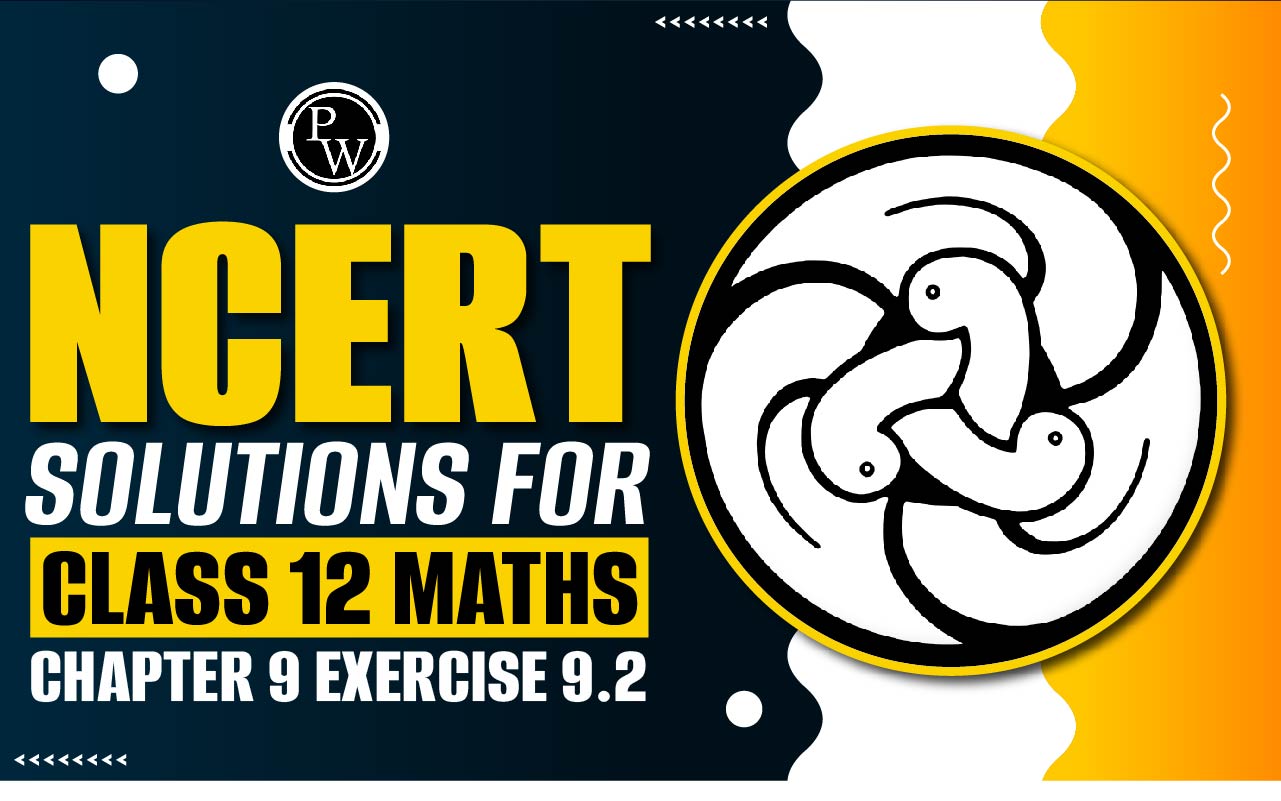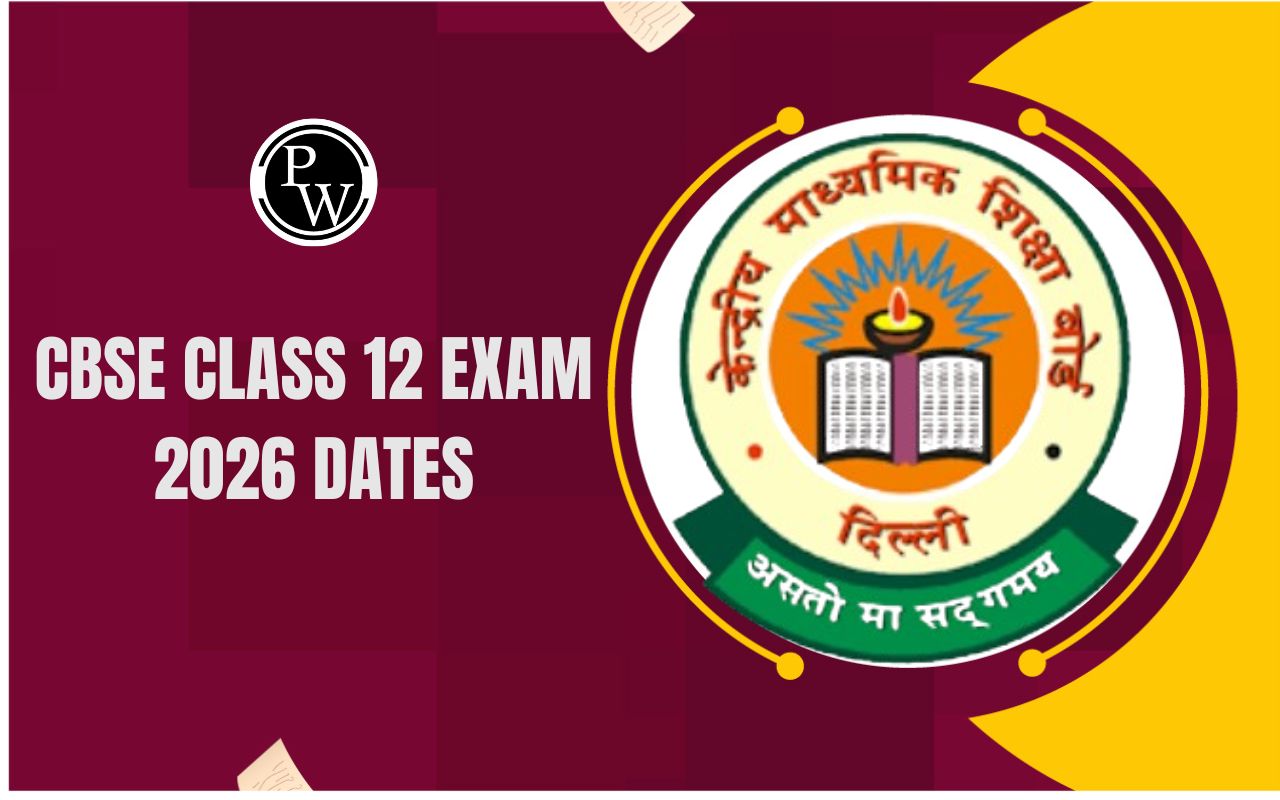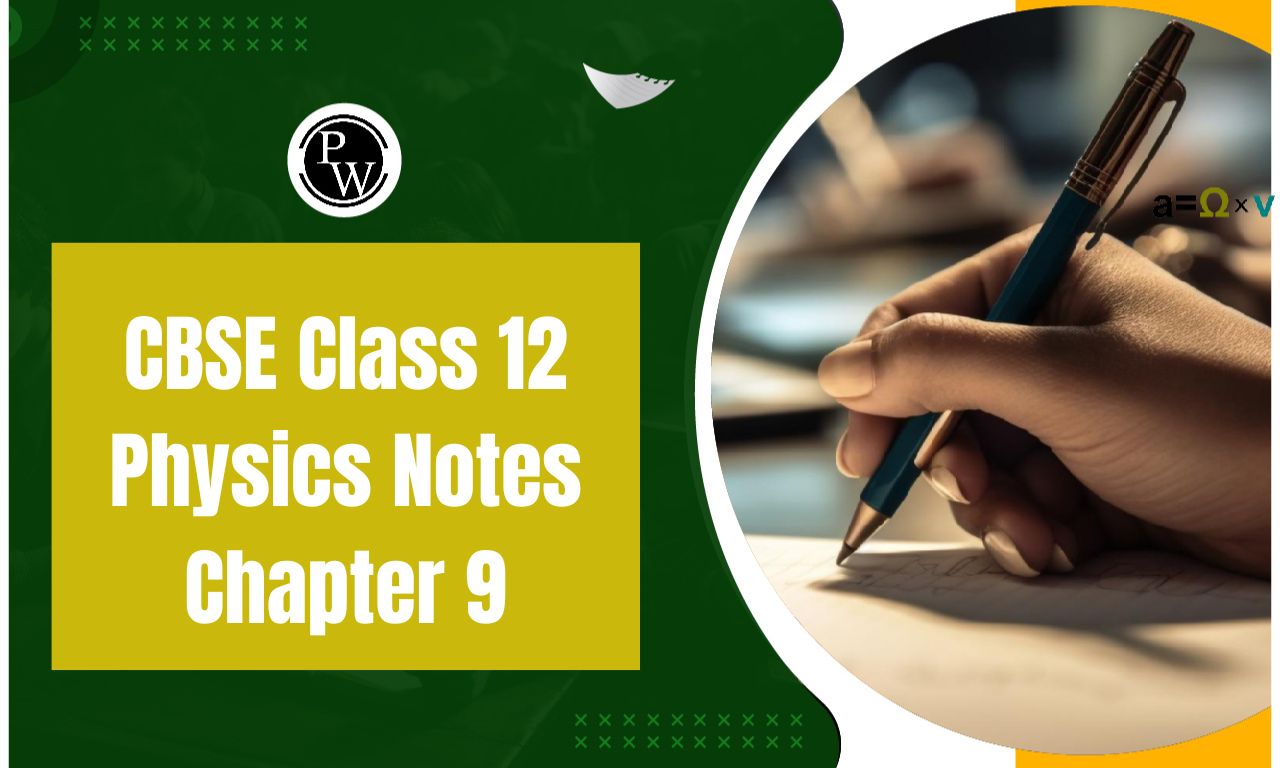

NCERT Solutions for Class 12 Maths Chapter 9 Exercise 9.2 (Differential Equations)
NCERT Solutions for Class 12 Maths Chapter 9 Exercise 9.2 Differential Equations is prepared by the academic team of Physics Wallah. We have prepared NCERT Solutions for all exercise of Chapter 9. Given below is step by step solutions to all questions given in the NCERT Solutions for Class 12 Maths Chapter 9 Exercise 9.2 of Differential Equations.NCERT Solutions for Class 12 Maths Chapter 9 Miscellaneous Exercise
NCERT Solutions for Class 12 Maths Chapter 9 Exercise 9.2 Overview
NCERT Solutions for Class 12 Maths Chapter 9 Exercise 9.2 cover several important topics. It is highly recommended for students to review each topic thoroughly in order to gain a comprehensive understanding of the concepts taught in the chapter and make optimal use of the provided solutions. These solutions are the result of dedicated efforts by the Physics Wallah teachers aimed at assisting students in grasping the concepts covered in this chapter. By going through and practicing these solutions, the objective is for students to achieve excellent results in their exams effortlessly.NCERT Solutions for Class 12 Maths Chapter 9 Exercise 9.2
Solve The Following Questions of NCERT Solutions for Class 12 Maths Chapter 9 Exercise 9.2:
In each of the Questions, 1 to 6 verify that the given functions (explicit) is a solution of the corresponding differential equation: Question 1. y = e x + 1 : y″ – y′ = 0 Solution : Given: y = e x + 1.png) Thus, the given function is the solution of the corresponding differential equation.
Thus, the given function is the solution of the corresponding differential equation.
NCERT Solutions for Class 12 Maths Chapter 9 Exercise 9.3
Question 2. y = x 2 + 2x + C : y′ – 2x – 2 = 0 Solution : Given: y = x 2 + 2x + C Differentiating both sides of this equation with respect to x , we get:.png) Hence, the given function is the solution of the corresponding differential equation.
Hence, the given function is the solution of the corresponding differential equation.
NCERT Solutions for Class 12 Maths Chapter 9 Exercise 9.4
Question 3. y = cos x + C : y′ + sin x = 0 Solution : Given: y = cos x + C Differentiating both sides of this equation with respect to x , we get: Hence, the given function is the solution of the corresponding differential equation.
Hence, the given function is the solution of the corresponding differential equation.
NCERT Solutions for Class 12 Maths Chapter 9 Exercise 9.5
Question 4. Solution :
Given: y = √1 + x
2
Solution :
Given: y = √1 + x
2
 Hence, the given function is the solution of the corresponding differential equation.
Hence, the given function is the solution of the corresponding differential equation.
NCERT Solutions for Class 12 Maths Chapter 9 Exercise 9.6
Question 5. y = Ax : xy′ = y (x ≠ 0) Solution : Given: y = Ax Differentiating both sides with respect to x , we get: Hence, the given function is the solution of the corresponding differential equation.
Question
6.
Hence, the given function is the solution of the corresponding differential equation.
Question
6.
 Solution :
Given: y = x sin x
Differentiating both sides of this equation with respect to
x
, we get:
Solution :
Given: y = x sin x
Differentiating both sides of this equation with respect to
x
, we get:
 Hence, the given function is the solution of the corresponding differential equation.
Hence, the given function is the solution of the corresponding differential equation.
In each of the questions 7 to 10, verify that the given functions (explicit or implicit) is a solution of the corresponding differential equation:
Question 7. xy = log y + C : Solution :
Given: xy = log y + C
Differentiating both sides of this equation with respect to
x
, we get:
Solution :
Given: xy = log y + C
Differentiating both sides of this equation with respect to
x
, we get:
 Hence, the given function is the solution of the corresponding differential equation.
Question
8
. y – cos y = x : (y sin y + cos y + x) y′ = y
Solution :
Given: y – cos y = x
Differentiating both sides of the equation with respect to
x
, we get:
Hence, the given function is the solution of the corresponding differential equation.
Question
8
. y – cos y = x : (y sin y + cos y + x) y′ = y
Solution :
Given: y – cos y = x
Differentiating both sides of the equation with respect to
x
, we get:
 Hence, the given function is the solution of the corresponding differential equation.
Question
9.
x + y = tan
-1
y : y
2
y' + y
2
+ 1 = 0
Solution :
Given: x + y = tan
-1
y
Differentiating both sides of this equation with respect to
x
, we get:
Hence, the given function is the solution of the corresponding differential equation.
Question
9.
x + y = tan
-1
y : y
2
y' + y
2
+ 1 = 0
Solution :
Given: x + y = tan
-1
y
Differentiating both sides of this equation with respect to
x
, we get:
 Hence, the given function is the solution of the corresponding differential equation.
Question
10.
Hence, the given function is the solution of the corresponding differential equation.
Question
10.
 Solution :
Given: y = √a
2
- x
2
Differentiating both sides of this equation with respect to
x
, we get:
Solution :
Given: y = √a
2
- x
2
Differentiating both sides of this equation with respect to
x
, we get:
 Hence, the given function is the solution of the corresponding differential equation.
Hence, the given function is the solution of the corresponding differential equation.
Choose the correct answer:
Question 11. The number of arbitrary constants in the general solution of a differential equation of fourth order are: (A) 0 (B) 2 (C) 3 (D) 4 Solution : Option (D) is correct. We know that the number of constants in the general solution of a differential equation of order n is equal to its order. Therefore, the number of constants in the general equation of fourth order differential equation is four. Question 12. The number of arbitrary constants in the particular solution of a differential equation of third order are: (A) 3 (B) 2 (C) 1 (D) 0 Solution : The number of arbitrary constants in a particular solution of a differential equation of any order is zero (0) as a particular solution is a solution which contains no arbitrary constant. Therefore, option (D) is correct.NCERT Solutions For Class 12 Maths Chapter 9 Exercise 9.2 FAQs
What is the formula of differential equation class 12?
A differential equation is of the form dy/dx= g(x), where y= f(x). These equations arise in a variety of applications, may it be in Physics, Chemistry, Biology, Anthropology, Geology, Economics etc.
How many exercises are there in Ch 9 class 12 maths?
There are a total of 113 questions in the NCERT Solutions Class 12 Maths Chapter 9 Differential Equations that are divided among 7 exercises.
Why differential equations are used?
Differential equations are important because for many physical systems, one can, subject to suitable idealizations, formulate a differential equation that describes how the system changes in time. Understanding the solutions of the differential equation is then of paramount interest.
🔥 Trending Blogs
Talk to a counsellorHave doubts? Our support team will be happy to assist you!

Check out these Related Articles
Free Learning Resources
PW Books
Notes (Class 10-12)
PW Study Materials
Notes (Class 6-9)
Ncert Solutions
Govt Exams
Class 6th to 12th Online Courses
Govt Job Exams Courses
UPSC Coaching
Defence Exam Coaching
Gate Exam Coaching
Other Exams
Know about Physics Wallah
Physics Wallah is an Indian edtech platform that provides accessible & comprehensive learning experiences to students from Class 6th to postgraduate level. We also provide extensive NCERT solutions, sample paper, NEET, JEE Mains, BITSAT previous year papers & more such resources to students. Physics Wallah also caters to over 3.5 million registered students and over 78 lakh+ Youtube subscribers with 4.8 rating on its app.
We Stand Out because
We provide students with intensive courses with India’s qualified & experienced faculties & mentors. PW strives to make the learning experience comprehensive and accessible for students of all sections of society. We believe in empowering every single student who couldn't dream of a good career in engineering and medical field earlier.
Our Key Focus Areas
Physics Wallah's main focus is to make the learning experience as economical as possible for all students. With our affordable courses like Lakshya, Udaan and Arjuna and many others, we have been able to provide a platform for lakhs of aspirants. From providing Chemistry, Maths, Physics formula to giving e-books of eminent authors like RD Sharma, RS Aggarwal and Lakhmir Singh, PW focuses on every single student's need for preparation.
What Makes Us Different
Physics Wallah strives to develop a comprehensive pedagogical structure for students, where they get a state-of-the-art learning experience with study material and resources. Apart from catering students preparing for JEE Mains and NEET, PW also provides study material for each state board like Uttar Pradesh, Bihar, and others
Copyright © 2025 Physicswallah Limited All rights reserved.
Get App











